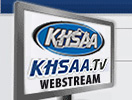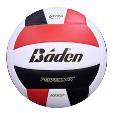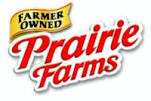03/30/15-DRAFT Information Regarding Emergency Policy Changes, Football Practice Limitation Changes Due to Concussion Recommendations from NFHS DRAFT NOT FINAL ADOPTED LANGUAGE
PrintThis is intended to update the membership about ongoing work by the Board of Control and the Commissioner’s office in response to the NFHS recommendations on football practice that were released to the KHSAA in November. It was important that the information be comprehensive, thorough and in somewhat final form in order to ensure consistent messaging and eliminate misinformation where possible, therefore it is only now in a final form for distribution.
Following the receipt of the report, the information was distributed to the KHSAA Board of Control members and placed on the agenda for its November, 2014 meeting for a brief discussion and background. At that meeting, staff was asked to review the information with various football constituent groups, including the Commissioner’s Advisory Committee on Football, and to try and determine best practices going forward. Clearly, the recommendations were a call for action in many areas and required immediate changes in the way Kentucky schools conduct football practice, including the timetables and timelines for the use of school owned equipment. The recommendations include fairly sweeping philosophical changes in terms of more clearly defining within the rules limitations on what can be done when wearing certain gear. Key to this discussion was the conceptual introduction of the USA Football terms used to describe the content and intensity of drill work and levels of contact. Those new definitions are:
Level 0 – “Air” – Players run a drill unopposed without contact.
Level 1 – “Bags” – Drill is run against a bag or another soft-contact surface.
Level 2 – “Control” – Drill is run at assigned speed until the moment of contact; one player is pre-determined the ‘winner’ by the coach. Contact remains above the waist and players stay on their feet.
Level 3 – “Thud” – Drill is run at assigned speed through the moment of contact; no pre-determined “winner.” Contact remains above the waist, players stay on their feet and a quick whistle ends the drill.
Level 4 – “Live Action” – Drill is run in game-like conditions and is the only time that players are taken to the ground.
For a complete description and explanation of the terms, including video descriptions, see http://usafootball.com/health-safety/levels-of-contact. Understanding these terms is critical to both the reduction of risk, and the adoption of new guidelines. Coaches and athletic administrators should note that there is a wealth of great material related to risk reduction and the need for revision of techniques in some areas on the USA Football site at http://usafootball.com/.
The complete text of the NFHS report is online and is important for all KHSAA school representatives to read it its entirety. The report is at http://www.nfhs.org/media/1014079/2014-nfhs-recommendations-and-guidelines-for-minimizing-head-impact-final-october-2014.pdf. The risk and increased liability placed on the KHSAA, its schools, its coaches, and all involved in interscholastic football by this report were a call to immediate action. The Board reviewed a first reading of alternatives and ways to comply with the recommendations at its January meeting, and directed staff to take the discussion input from that day, and from various meetings with football coaches and administrator groups in the days and weeks following, and prepare a final draft for review at its March meeting.
One of the key elements that Board of Control members requested for review at that meeting by the staff was to determine if the previous policies on equipment distribution for July (see the information distributed in July, 2014 at http://khsaa.org/071414-reminder-about-changes-in-football-preseason-practice-rules/) could be relaxed in July and allow for more gradual phase-in of equipment. Clearly, if the contact periods were more tightly regulated, therefore reducing overall risk, then some July permissions could return. Clarity was to be sought both from the catastrophic insurance carriers and within the NFHS task force recommendations.
At its March special meeting, the Board requested that the information and recommendations be distributed to the schools for an opportunity for final feedback prior to final adoption at the April Board of Control meeting. Feel free to submit comments via email to the office and each comment will be distributed to the staff and Board of Control members for their review.
Make no mistake, there are substantial changes included in the final recommendations. But when reviewing, administrators and coaches must keep one central thought in mind. The number one goal is player safety, and the reduction of exposure to head injuries and concussion. The primary way to achieve that goal, is to wear full gear less, and allow less full contact practice. The second but perhaps equally important goal, is the long term sustaining of the sport as a viable participation opportunity throughout the state. Participation has been trending downward nationally, and much of that has been attributed to the recent increase in available information concerning concussions and the fear of many parent groups of allowing their children to become involved due to this data.
What has evolved from this report are changes that can lead to sustaining football in both the near and short term. Necessarily, due to the recommendations, there have been losses of some opportunities to practice in full gear. Things such as multiple contact practice two-a-day sessions are over. Activities labeled as “camps” which were merely a creative means to practice in full gear prior to the start of full contact practice, cannot be held. But gained is the entire month of July after the dead period for helmet only practice and for late July practice in shells, insurance coverage that had previously cost the schools for 7 on 7 activities now being provided, and truly a schedule that allows for the athletes to come off of the dead period and gradually add gear, ensure that nearly all schools have the same amount of practice, and lessen exposure to head injury and concussion by lessening contact.
Below is a summary of the report and recommended actions. Please take the time to read these reports in their entirety and the referenced documents.
RECOMMENDATIONS FROM THE NFHS TASK FORCE FOR MINIMIZING IMPACT EXPOSURE AND CONCUSSION RISK IN FOOTBALL (See full report at http://www.nfhs.org/media/1014079/2014-nfhs-recommendations-and-guidelines-for-minimizing-head-impact-final-october-2014.pdf)
The NFHS has issued recommendations on minimizing impact exposure and concussion risks as follows:
- Full-contact should be limited during the regular season, as well as during activity outside of the traditional fall football season. For purposes of these recommendations and guidelines, full-contact consists of both “Thud” and “Live Action” using the USA Football definitions of Levels of Contact.
- Member state associations should consider a variety of options for limiting contact in practices. The task force strongly recommends full-contact be allowed in no more than 2-3 practices per week. Consideration should also be given to limiting full-contact on consecutive days and limiting full-contact time to no more than 30 minutes per day and no more than 60-90 minutes per week.
- Pre-season practices may require more full-contact time than practices occurring later in the regular season, to allow for teaching fundamentals with sufficient repetition.
- Pre-season acclimatization protocols and regulations regarding heat and hydration take precedent and should always be followed.
- While total full-contact practice days and time limitations may be increased during the pre-season, the emphasis should focus on the proper principles of tackling and blocking during the first several practices, before progressing to “Thud” and “Live Contact.”
- During pre-season twice-daily practices, only one session per day should include full contact.
- Each member state association should review its current policies regarding total quarters or games played during a one-week time frame.
- Consistent with efforts to minimize total exposure to full-contact, head impact exposure, and concussion risk, member state associations with jurisdiction over football outside of the traditional fall football season should review their current policies to assess if those policies stand in alignment with the Fundamentals discussed within this report and, if needed, modify the policies accordingly.
- Each member state association should reach out to its respective state coaches’ association on designing and implementing a coach education program that appropriately integrates youth, middle school, and high school football programs in every community. USA Football and the NFHS Fundamentals of Coaching courses should be the primary education resources for all coaches. Education for coaches should also include the proper fitting and care of helmets.
- Each member state association should regularly educate its schools on current state concussion law and policies and encourage schools to have a written Concussion Management Protocol. Schools should also be encouraged to share this information with coaches, parents, and students annually.
- An Emergency Action Plan (EAP) with clearly defined written and practiced protocols should be developed and in place at every high school. When possible, an athletic trainer should be present at all practices and games.
IN CONSIDERATION OF THE RECOMMENDATIONS OF THE NFHS TASK FORCE, “RECOMMENDATIONS AND GUIDELINES FOR MINIMIZING IMPACT EXPOSURE AND CONCUSSION RISK IN FOOTBALL”, THE FOLLOWING POLICIES SHOULD BE IMPLEMENTED BY THE BOARD OF CONTROL SOLELY FOR FOOTBALL, AND IMPLEMENTED IMMEDIATELY FOR THE 2015 PLAYING SEASON:
1. That all prior use of the word “contact” in existing regulations and interpretations, be changed to “full gear”, “shells (helmet & shoulder pads)”, “helmets only’ and “no gear”, based solely on the gear that is being worn. The use of equipment to define “contact” should be eliminated.
2. For the purpose of guidelines for football, the KHSAA adopt the definitions contained in the USA Football Regulations. These specific guidelines and terminologies would
Definition of Levels of Contact:
0 – “Air” – Players run a drill unopposed without contact.
1 – “Bags” – Drill is run against a bag or another soft-contact surface.
2 – “Control” – Drill is run at assigned speed until the moment of contact; one player is pre-determined the ‘winner’ by the coach. Contact remains above the waist and players stay on their feet.
3 – “Thud” – Drill is run at assigned speed through the moment of contact; no pre-determined “winner.” Contact remains above the waist, players stay on their feet and a quick whistle ends the drill.
4 – “Live Action” – Drill is run in game-like conditions and is the only time that players are taken to the ground.
For the purposes of this rule:
“Contact” will be defined as drills run at the Level 3 – Thud and Level 4 – Live Action Level, and Drills run at the Level 0 – Air, Level 1 – Bags and Level 2 – Control level shall be defined as “Non-Contact”
All drills in shells (shorts, shoulder pads and helmets) shall be “Non-Contact”.
In helmets- only, only Level 0 – “Air” and Level 2 – “Bags” drills may be conducted
3. In response to NFHS recommendation 1, 2 and 6 (spring practice), that the regular season and during spring practice, during non-game situations (practice), a team may participate in “Thud” or “Live Action” drills and game time simulations for no more than ninety-minutes per team, per week.
4. In response to NFHS recommendation 1, 2 and 6, During the spring practice period, a team may participate in “Thud” or “Live Action” drills and game time simulations for no more than six of the practice sessions, and that the practice sessions be structured as follows:
Two days Non-Contact (0 – “Air”, 1 – “Bags”, 2 – “Control”)
Two days Contact (3 – “Thud”, 4 – “Live Action”)
One day Non-Contact (0 – “Air”, 1 – “Bags”, 2 – “Control”)
Two days Contact (3 – “Thud”, 4 – “Live Action”)
One day Non-Contact (0 – “Air”, 1 – Bags, 2 – “Control”)
Two days Contact (3 – “Thud”, 4 – “Live Action”)
5. In response to NFHS recommendation 3, existing rules address these recommendations, and the only change necessary is clarification in the existing interpretations using Thud and Live Contact to illustrate allowable actions during practice as well as highlighting what is not permissible during the acclimatization and acclimation periods.
6. In response to NFHS recommendation 4, while the majority of this limitation is in place, the rules should be amended such that only one period on the multiple practice days be allowed to involve “Thud” or “Live Action”, regardless of permitted gear.
7. In response to NFHS recommendation 5, it is recommended that football players be limited to eight (8) quarters per week with the following provisions:
Each week is a Friday through Thursday period;
Participating in one play in a game at any level counts as one quarter;
Any playing time greater than 6 minutes counts as one quarter;
A playing time period of 6 minutes or less counts as one half quarter;
A player be limited to 4 quarters in any one day.
8. In response to NFHS recommendation 6, it is recommended to approve Recommendations 3 and 4 as detailed above
9. In response to NFHS recommendation 7, it is recommended that the education component is contained in existing training and recommends staff to include helmet fitting information in the annual rules review for coaches.
10. In response to NFHS recommendations 8 and 9, it is recommended that existing KHSAA regulations address these concerns.
When adopted, the revised timeline for practice and contact would be as listed at: http://khsaa.org/032915-comparison-of-old-and-new-football-equipment-timelines/
In addition, necessary emergency changes to Bylaw 23 are listed at: http://khsaa.org/033015-bylaw-23-changes-necessary-due-to-emergency-adoption-of-nfhs-task-force-recommendations/
Print































